The research team led by Yang Zhifeng at the Southern Marine Science and Engineering Guangdong Laboratory (Guangzhou) has published their findings in the Cell sub-journal One Earth (impact factor: 15.1) under the title “Climate change decreases groundwater carbon discharges in global tidal wetlands.” The first and corresponding author of the paper is researcher Ouyang Xiaoguang from the Southern Marine Science and Engineering Guangdong Laboratory (Guangzhou). Collaborating institutions include Southern Cross University and the University of Gothenburg.
Tidal wetlands can sequester significant amounts of carbon, some of which is released into the coastal ocean in a dissolved form through groundwater. The dissolved carbon output includes carbonates and bicarbonates, which are key components of total alkalinity and play an important role in mitigating ocean acidification. However, current assessments of dissolved carbon output from tidal wetlands via groundwater only consider recirculated seawater while neglecting coastal groundwater output. Recent studies have predicted a high coefficient of variation (C.V.) for the dissolved carbon output from groundwater, making it difficult to accurately define the dissolved carbon output from tidal wetlands.
This study aims to assess the output of groundwater-dissolved carbon and total alkalinity from global tidal wetlands, identify the driving factors behind the output of dissolved inorganic carbon from groundwater in these wetlands, and predict the response of groundwater-dissolved inorganic carbon output in tidal wetlands to climate change. Through a meta-analysis of data from 337 global sites (including 5 supplementary monitoring sites), numerical simulations, and random forest models, the study determined the dissolved carbon output from groundwater in tidal wetlands by integrating recirculated seawater and coastal groundwater output. The results revealed that (1) the outputs of dissolved inorganic carbon, dissolved organic carbon, and total alkalinity from global mangrove groundwater were 1285.1 g C m-2 yr-1, 276.3 g C m-2 yr-1, and 101.7 mol m-2 yr-1 (C.V.=83.8%), respectively, while the corresponding output for tidal marsh groundwater was 476.1 g C m-2 yr-1, 44.3 g C m-2 yr-1, and 42.5 mol m-2 yr-1 (C.V.=96.8%), with both coefficients of variation being lower than the recent global studies of 357.4% and 521.8% (Figure 2); (2) the output of dissolved inorganic carbon from groundwater in tidal wetlands is regulated by factors such as evapotranspiration, tidal range, precipitation, groundwater levels, permeability, rates of relative sea-level rise, and tidal frequency (Figure 3); (3) the dissolved carbon released from tidal wetlands constitutes 30% of the terrestrial input to the ocean, but is projected to decline by 9.02% to 28.91% in response to climate change (increased evapotranspiration, changes in rainfall patterns, and relative sea-level rise) in the future (Figure 4). The findings of this study will facilitate a better understanding of the carbon output from tidal wetlands via groundwater in the carbon cycle and assess the role and value of tidal wetlands as nature-based solutions in mitigating ocean acidification.
This research was supported by the Guangdong Provincial Marine Six Major Industries Project, key projects of the National Natural Science Foundation, "Belt and Road" International Scientific Organization Alliance collaborative research projects, key technological planning projects for Nansha District in 2023, and projects from the Southern Marine Science and Engineering Guangdong Laboratory (Guangzhou).
Full paper: Ouyang, X., Maher, D.T., Santos, I.R. (2024) Climate change decreases groundwater carbon discharges in global tidal wetlands. One Earth, doi: 10.1016/j.oneear.2024.07.009.
Paper link: http://doi/10.1016/j.oneear.2024.07.009.
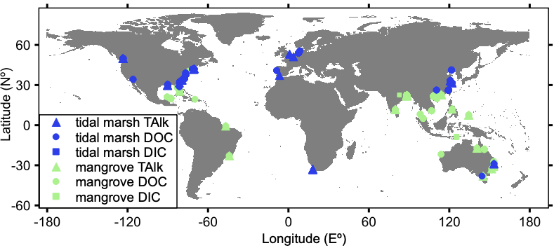
Figure 1 shows the distribution of groundwater dissolved carbon and total alkalinity data in global tidal wetlands.
a)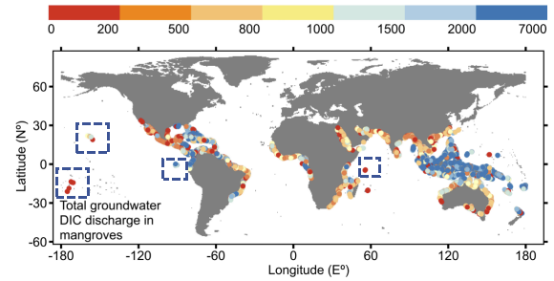

b)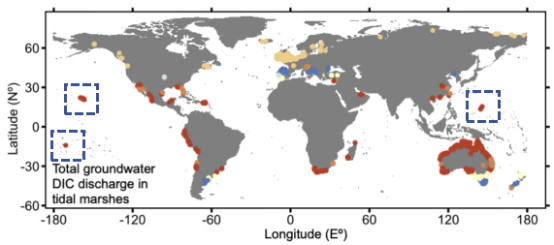

Figure 2 illustrates the distribution of dissolved inorganic carbon output from global tidal wetlands through groundwater. a) Mangroves, b) Tidal marshes.
a) b)
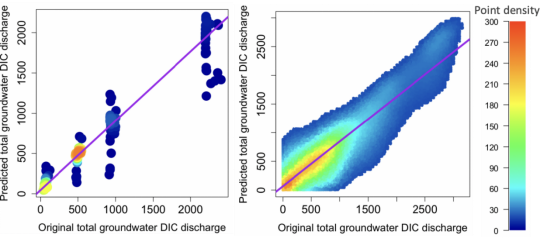
c)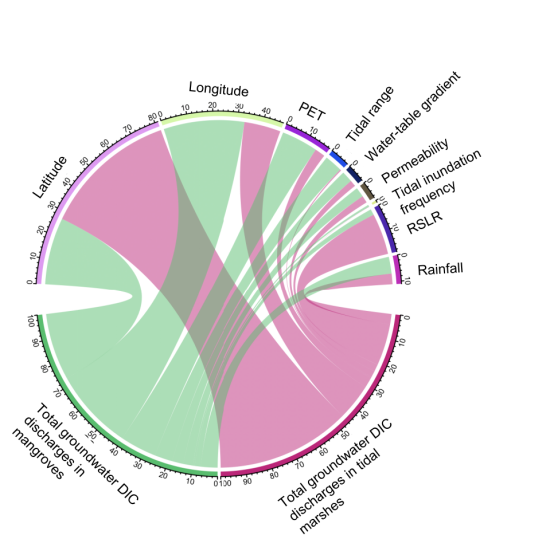

Figure 3 depicts the relationship between predicted and actual values of dissolved inorganic carbon output from global tidal wetlands through groundwater, along with the driving factors. a) and b) show the relationship for mangroves and tidal marshes, respectively, while c) outlines the driving factors for dissolved inorganic carbon output from global tidal wetlands through groundwater.
a)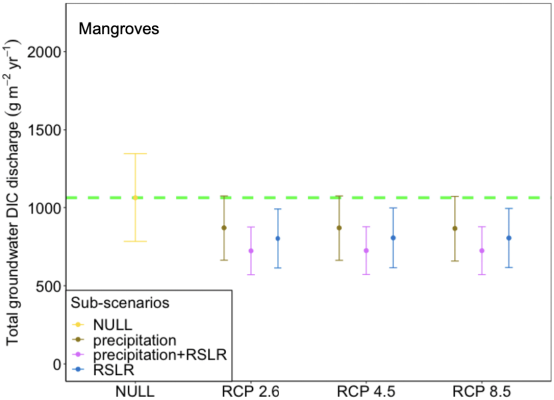

b)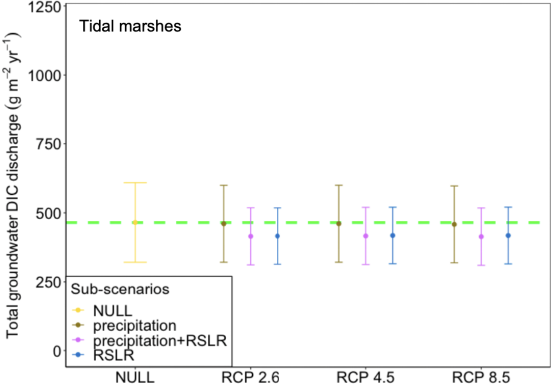

c)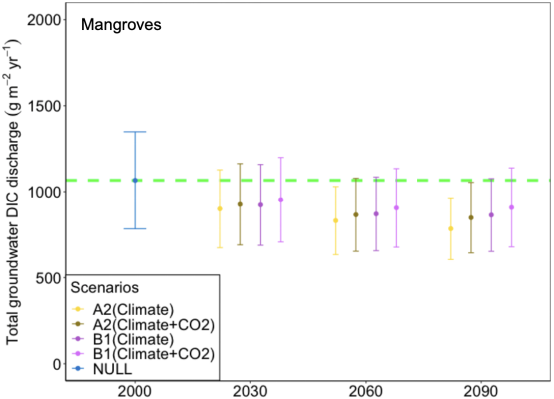

d)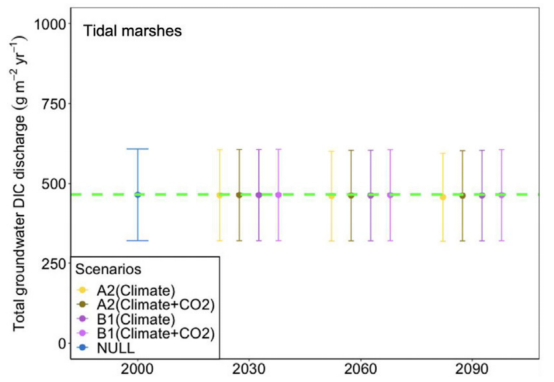

Figure 4 presents changes in dissolved inorganic carbon output from tidal wetlands through groundwater under different climate change scenarios. a) and b) represent different Representative Concentration Pathway (RCP) scenarios, while c) and d) depict scenarios with increased CO2 concentrations.
Attachment download:
